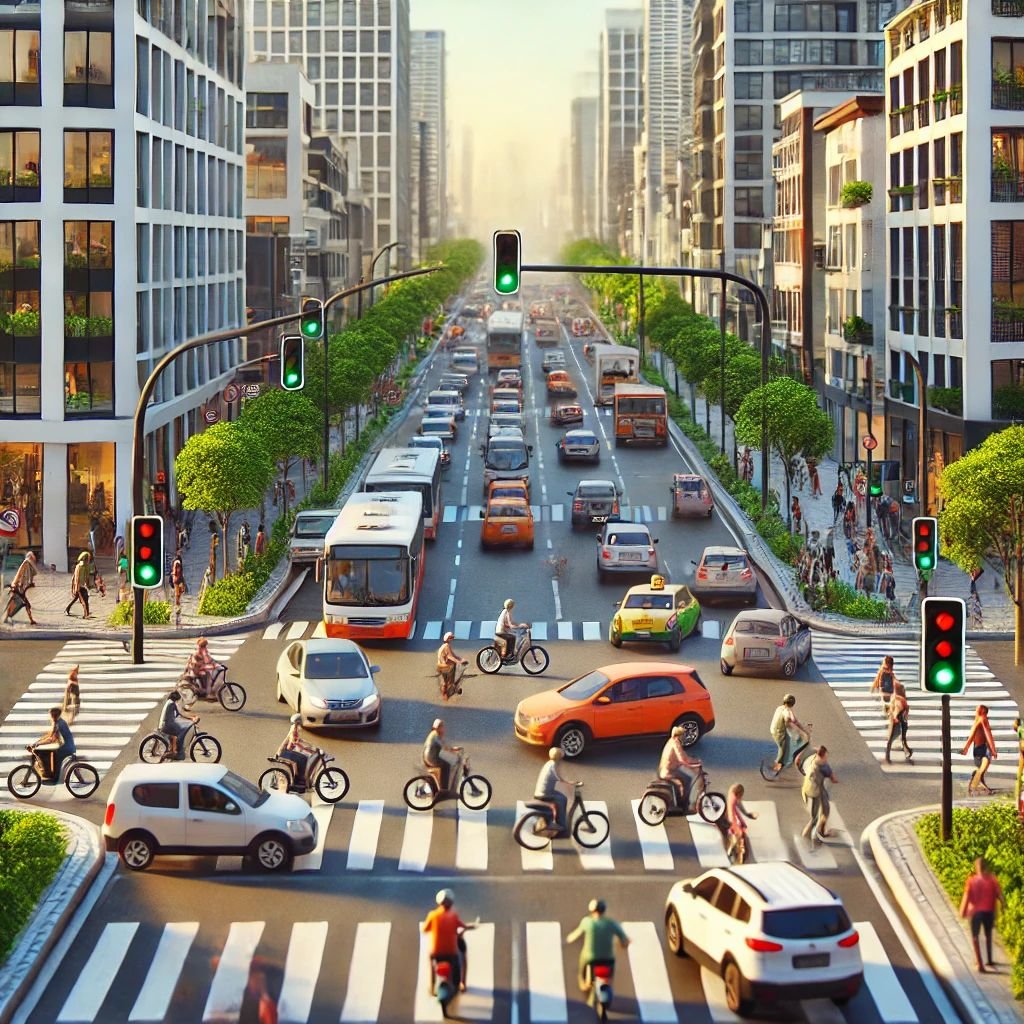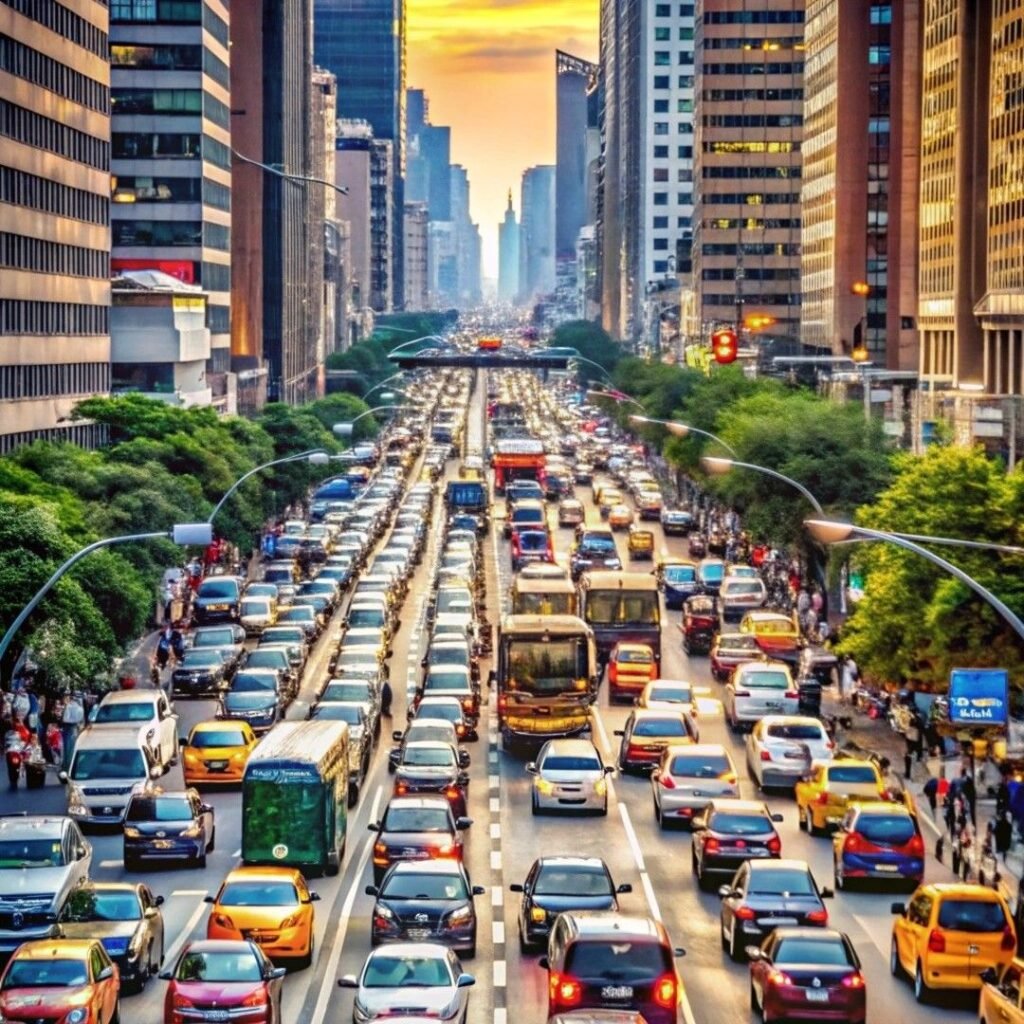Introduction
Traveling abroad is one of life’s most enriching experiences, but it often comes with challenges that test our patience and adaptability. Among them, navigating public transport is perhaps the most common struggle faced by travelers. Whether it’s figuring out how to buy a bus ticket in a small European town, understanding the intricate metro maps of Tokyo, or catching a train on time in a bustling city like New York, public transportation abroad can feel overwhelming.
Unlike private taxis or ride-hailing services, public transport requires you to immerse yourself in the local way of life. While this is rewarding, it also demands quick learning, flexibility, and sometimes a fair bit of courage. The unfamiliarity of foreign systems — different languages, rules, schedules, and cultural etiquettes — can leave even seasoned travelers scratching their heads. From the anxiety of boarding the wrong bus to the frustration of missing a train connection, these challenges are part of the real travel experience.
Yet, despite the confusion, public transport offers benefits that make it worth the effort. It is affordable, eco-friendly, and provides travelers with a genuine glimpse into local culture and daily routines. Riding a tram in Amsterdam, catching a subway in Seoul, or hopping on a local bus in Mexico City allows you to see life through the eyes of the people who call that place home.
This article explores the public transport challenges travelers face abroad and offers practical strategies to overcome them. By the end, you’ll have the tools to not only survive but thrive while commuting in a foreign country, turning what once felt like a hassle into a memorable part of your journey.
Traveling abroad is an exciting adventure, but one of the most common struggles for both first-time and seasoned travelers is navigating public transport. Unlike the comfort of private taxis or ride-hailing apps, public transportation systems — buses, trains, metros, and trams — come with their own challenges. From confusing routes and language barriers to ticketing issues and unexpected delays, travelers often find themselves overwhelmed.
However, mastering public transport is also one of the most rewarding parts of travel. It’s affordable, eco-friendly, and offers a glimpse into local life that you might miss otherwise. Imagine sipping coffee on a morning metro ride in Paris, joining locals on a bus in Bangkok, or taking a high-speed train in Japan — all these experiences add cultural richness to your journey.
This article explores the most common challenges travelers face with public transport abroad, and more importantly, practical solutions to overcome them. By the end, you’ll feel confident and prepared to ride buses, trains, and metros anywhere in the world.

1. Understanding Common Public Transport Challenges
Public transport systems differ widely across the world, which is why travelers often encounter confusion when using them abroad. One of the most common difficulties is the language barrier. Schedules, announcements, and signs may be entirely in the local language, leaving visitors unsure of which bus or train to take. This can lead to missed stops or boarding the wrong vehicle altogether.
Another frequent challenge is complex route networks. Large cities like Tokyo, London, or New York have vast metro and bus systems with multiple lines and transfer points, which can feel overwhelming to newcomers. Similarly, ticketing systems vary: some cities use smart cards, others still rely on cash, and many require validation before boarding — a detail that travelers often miss, risking fines.
Crowds during peak travel hours can make commuting stressful, while cultural differences in behavior — such as queueing norms, noise levels, or priority seating — may leave travelers feeling out of place. On top of this, safety concerns like pickpocketing or scams are real in certain destinations.
By understanding these common challenges in advance, travelers can prepare better and approach foreign transport systems with greater confidence.
Public transport challenges abroad often arise because systems differ widely between countries. While one city may have a state-of-the-art metro app, another might still rely on paper tickets and cash. Here are key challenges:
- Language Barriers: Signs, announcements, and schedules are often in the local language. Without translations, travelers risk missing stops or boarding the wrong vehicle.
- Complex Route Maps: Big cities like Tokyo or New York have dense networks that can intimidate newcomers.
- Ticketing Confusion: Some systems use tokens, others cards, and many require exact change. Figuring out how to buy and validate tickets can be stressful.
- Peak-Hour Crowds: Rush hours can turn a ride into an exhausting experience.
- Cultural Differences: Public transport etiquette varies — in Japan, silence is respected, while in some Latin American countries, lively conversations are common.
- Safety Concerns: Pickpocketing, scams, and getting lost are genuine worries.
- Unpredictable Delays: Strikes, weather, or technical issues can disrupt schedules unexpectedly.
Understanding these challenges is the first step in overcoming them. The good news? With planning and a little patience, almost all of these obstacles can be managed.
2. Preparing Before You Travel
A smooth public transport experience abroad begins long before you board your first bus or train. The key is preparation. Start by researching the local transport system of your destination. Visit official transit websites, browse travel forums, or read recent blog posts from other travelers to understand ticketing methods, schedules, and common routes.
Next, download helpful apps. Global tools like Google Maps, Citymapper, and Moovit provide real-time directions in many cities. However, don’t overlook local apps — such as TfL Go in London, Tokyo Metro’s app, or Delhi Metro Rail — which often offer more accurate updates.
Learning a few essential local phrases can make a big difference. Questions like “Which bus goes to the city center?” or “Where is the nearest metro station?” are practical for everyday commuting. Even if you only know a handful of words, locals often appreciate the effort.
Finally, plan alternatives. Public transport can be unpredictable, so it helps to identify backup routes or keep ride-hailing apps installed as a safety net. With this preparation, you’ll feel more confident, save time, and avoid unnecessary stress when navigating unfamiliar systems.
Preparation is the foundation of smooth commuting abroad.
Research Local Transport Systems
Before boarding a flight, spend time studying your destination’s public transport:
- Visit official transit websites.
- Read travel forums like TripAdvisor or Reddit.
- Check blogs from travelers who’ve visited recently.
Download Useful Apps
- Google Maps and Moovit for global directions.
- Citymapper for major cities.
- Local apps (e.g., Delhi Metro app, London’s TfL Go, Tokyo Metro).
Learn Key Phrases
Knowing phrases like “Where is the bus stop?”, “Which train goes to the city center?”, or “How much is a ticket?” in the local language helps immensely.
Plan Alternative Routes
Have a backup route in case your train line shuts down or buses are delayed.
3. Buying and Using Tickets
One of the first challenges travelers encounter abroad is figuring out how to buy and use tickets correctly. Different countries — and sometimes even different cities — have their own systems, which can be confusing at first.
In some places, tickets are still purchased from kiosks or ticket counters, often requiring local currency and exact change. Elsewhere, automated machines are common, though they may not always offer English instructions. Increasingly, many transport systems have introduced contactless payments where you can simply tap a card or smartphone at the gate, making the process easier for visitors.
Travelers should also be aware of different ticket types. Single-ride tickets are ideal for one-off journeys, while day passes or travel cards (like London’s Oyster Card or Japan’s Suica Card) save money if you plan multiple trips in a day. Some cities even offer tourist passes that combine transport with attraction discounts.
Importantly, in many countries, tickets must be validated before boarding — usually by stamping them in a machine. Skipping this step, even unintentionally, can result in fines.
By understanding local ticketing systems in advance, you can avoid stress, save money, and travel smoothly without unwanted surprises.
Ticketing can be confusing, but it doesn’t have to be.
- Types of Tickets:
- Single-ride tickets for short trips.
- Day passes if you’ll be hopping around frequently.
- Travel cards (e.g., Oyster in London, Suica in Japan) for convenience.
- How to Pay:
- Machines may accept cards, but some require local currency.
- Contactless payments (tap cards, smartphones) are increasingly common.
- Validation Rules:
In some countries (like Italy), you must validate your ticket before boarding by stamping it at machines. Forgetting this can lead to heavy fines.
Tip: Always keep small change and ask locals if unsure.

4. Navigating Routes and Transfers
Understanding how to move efficiently between buses, trains, or metro lines is crucial for a smooth travel experience abroad. Many cities have complex transit networks, and without careful planning, it’s easy to get lost or miss connections.
Start by studying maps in advance. Identify your starting point, transfer stations, and destination before you set out. Many metro and bus systems are color-coded or numbered, so memorizing line names or numbers helps reduce confusion. Taking a photo of maps at your station or downloading them offline on your phone can be a lifesaver when internet access is limited.
Transit apps like Google Maps, Citymapper, and local transport apps provide real-time updates on schedules, delays, and platform changes. Using these tools can help you plan the fastest or most convenient route, including alternative paths if a line is closed or delayed.
When transferring, pay attention to signage and landmarks. In unfamiliar stations, signs may be in the local language, so observing where locals go can help. Leave extra time for transfers, especially during rush hour, as navigating crowded platforms or long corridors may take longer than expected.
By preparing routes ahead and using technology wisely, travelers can confidently navigate transfers and reach their destinations without unnecessary stress.
Large cities often have sprawling transport networks with complex transfers.
- Study Maps Ahead of Time: Identify your start, transfer points, and destination.
- Use Transit Apps: Apps show live departure times and alerts for delays.
- Color-Coded Systems: Many metros use colors for lines. Remember line names or numbers as well.
- Practice Landmark Awareness: Look out for famous landmarks near stops so you don’t miss your station.
Pro tip: Take a photo of the transport map at your stop for quick reference.
5. Safety and Security Tips
While public transport is generally safe, travelers should remain vigilant to avoid common risks. Pickpocketing is one of the most frequent issues, especially in crowded buses, trains, and metro stations. Keep valuables in front pockets, a money belt, or an anti-theft bag to reduce risk.
Stay aware of your surroundings, particularly during peak hours or in unfamiliar areas. Avoid getting distracted by your phone, and pay attention to your belongings and fellow passengers. In some cities, empty train cars late at night can pose safety concerns, so it’s better to choose well-populated compartments or carriages.
Use official channels for tickets and information. Avoid purchasing from unauthorized sellers or strangers, as scams are possible. Always double-check that your ticket is valid and validated if required, to avoid fines.
It’s also helpful to know emergency contacts in advance. Save local police, transit authorities, and embassy numbers in your phone. Additionally, traveling with a friend or in a group can increase security, especially in cities you’re unfamiliar with.
By staying alert, protecting your belongings, and being aware of local rules and emergency contacts, you can enjoy public transport abroad safely and confidently, making your travel experience smoother and more enjoyable.
Public transport is generally safe, but awareness is key.
- Guard Against Pickpockets: Keep wallets and phones in front pockets or anti-theft bags.
- Stay Alert in Crowds: Be cautious at crowded bus stops or packed trains.
- Trust Official Sources: Only buy tickets from authorized counters or machines.
- Avoid Empty Compartments at Night: Choose well-lit and crowded coaches.
- Emergency Numbers: Save local emergency contacts in your phone.
Remember, looking confident — even if you’re unsure — discourages scammers.
6. Cultural Etiquette in Public Transport
Understanding and respecting local customs can make using public transport abroad a smoother and more enjoyable experience. Every country has its own rules and social norms that may differ significantly from what you’re used to.
Queueing is a prime example. In cities like London or Singapore, strict lines are followed at bus stops and train stations, whereas in other countries, boarding may be more informal. Observing locals helps you adapt quickly and avoid misunderstandings.
Noise levels also vary. In Japan, speaking quietly or remaining silent on trains is expected, while in Latin American countries, lively conversation or music may be common and accepted. Knowing this helps you blend in and show respect for fellow passengers.
Seating etiquette is another consideration. Many systems have priority seats for the elderly, pregnant women, or people with disabilities — always yield these seats when required. Similarly, eating or drinking may be prohibited on some trains and buses, so pay attention to posted rules.
Finally, personal space and body language differ across cultures. Being aware of these subtleties prevents unintentional offense. By observing local practices and adjusting your behavior accordingly, you demonstrate respect and make your public transport experience more comfortable and culturally enriching.
Respecting local customs makes commuting smoother.
- Queueing: In London, always form a queue; in other places, boarding may be more flexible.
- Noise Levels: Silence in Japan vs. lively chatter in Brazil.
- Seat Etiquette: Priority seats for elderly, pregnant, or disabled individuals.
- Eating/Drinking Rules: Some metros prohibit eating inside.
- Personal Space: Different cultures have different comfort zones.
Observing locals’ behavior is the best way to adapt quickly.
7. Coping with Delays and Unexpected Issues
No matter how well you plan, delays happen.
- Check Real-Time Updates: Apps and station boards provide alerts.
- Have a Buffer Time: Don’t plan tight connections between buses or trains.
- Know Alternatives: Keep taxi or rideshare apps as a backup.
- Stay Calm: Stress won’t fix delays; use downtime to rest, read, or explore nearby spots.

8. Advantages of Using Public Transport Abroad
Despite the challenges, using public transport abroad comes with numerous benefits that enhance both travel convenience and cultural experience. One of the most obvious advantages is affordability. Buses, trains, and metros are often much cheaper than taxis or ride-hailing services, allowing travelers to explore more while staying on budget.
Public transport is also eco-friendly, reducing your carbon footprint compared to private vehicles. Choosing buses or trains supports sustainable travel and helps protect the environment while visiting new destinations.
Despite challenges, public transport has major benefits:
- Affordability: Much cheaper than taxis.
- Eco-Friendly: Reduces your carbon footprint.
- Local Experience: Offers an authentic view of daily life.
- Efficiency: Trains in Europe or Japan are often faster than cars.
- Accessibility: Connects you to areas taxis may not reach.
By embracing public transport, you’re not just saving money — you’re gaining cultural insight.
Conclusion
Navigating buses, trains, and local commutes abroad may feel intimidating at first, but with preparation, awareness, and the right mindset, it becomes an enriching part of the journey. From handling ticketing systems and overcoming language barriers to respecting local etiquette and staying safe, travelers can transform public transport from a challenge into a highlight of their trip.
Ultimately, every bus ride, metro trip, or train journey offers more than just transportation — it’s an opportunity to see the world from a local’s perspective. So next time you travel abroad, don’t shy away from public transport. Instead, step aboard with confidence and curiosity.
Related Post: 7 Top Causes of Google Maps Not Working and How to Fix Them

